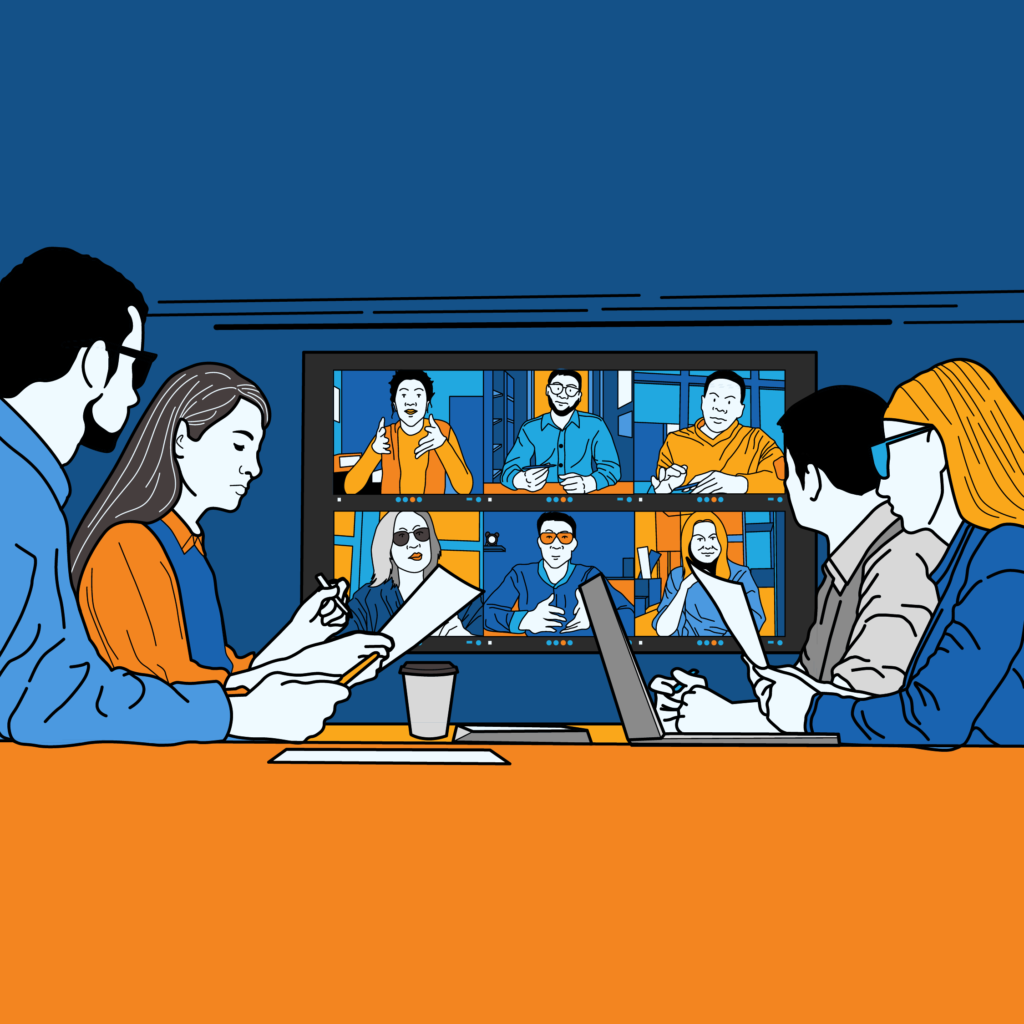How To Make Your Meetings More Productive

It’s no secret to anyone that people think there isn’t such a thing as a productive meeting, especially if it takes up a lot of your office hours. Sometimes, you’d even feel like you don’t have time to do your actual job because you’re off from one meeting to the next.
Even before the pandemic, managers said that meetings were inefficient, with 65% of them stating that it gets in the way of employees doing their actual work. It got even worse during the pandemic when everyone was working from home, and meetings became one way of checking in with progress and tasks done during the day.
While meetings are an inevitable part of working remotely, it doesn’t have to be as painstaking as it currently is. Here are just some ways you can make your meetings more productive moving forward.
Set aside a specific period for meetings
One of the reasons why meetings can be unproductive is that it can sometimes interrupt you from your groove while working. You might be in the zone and fully concentrated in your tasks, but then you get interrupted because you have to attend a meeting right in the middle of your day. Worse still are those meetings that just get called up out of nowhere, which cuts into the momentum that you’ve been building up all day.
This builds up to broken focus and frustration, simply due to the fact that one has to collect their thoughts again and gather their focus on the task at hand. And if it happens frequently during their shift, that’s a lot of lost time trying to refocus and get back into their deep work state.
A good solution to this is to set aside a specific time of the shift, so employees can manage expectations. Ideally, it should either be placed at the start or near the end of the shift, so employees can gauge when they need to start wrapping up their work and prepare for the upcoming meeting. It can also be done in the middle of the day, as long as the schedule is consistent.
This way, employees don’t get interrupted randomly with meetings, and it builds into a habit in the long term to get stuff done before the meeting, so they can report their progress or finished tasks by then.
Don’t schedule meetings too close to each other
Another time-waster in terms of meetings is when one meeting runs longer than expected, leaving the other members waiting for the missing person before they could start. Not only is that wait time wasted on nothing, but now you’ll also be late for the next meeting if you scheduled another one right after that as well.
Putting a 15–30-minute buffer in-between meetings can do wonders in helping you collect your thoughts and get ready for the next meeting. Also, it helps avoid overlaps in scheduling, so your team won’t be left hanging should your previous meeting run longer than expected. Hence, all your scheduled meetings will be more productive and not rushed, should you feel like you need to extend a few minutes to get the current one wrapped up.
Set a good time limit for more productive meetings
A lot of companies would set meetings without specifying a fixed period, or if they do, often think of it as a soft reminder rather than a hard stop. This is bad practice, as it sets the precedent that one could take as long as they want to get their point across or argue over them. This wastes time and work hours that could be spent finishing up tasks and actual work.
While you may think your team has a lot to discuss and a full hour is warranted, you should avoid doing so. You would want to condense your meetings to 30 mins or so, and have a pre-planned agenda to follow in order to facilitate a good flow of discussion. Having a good outline of the meeting avoids too much back and forth on topics, which tends to eat up a lot of time due to jumping from one topic to another and back again.
If you feel like 30 minutes is not enough for a productive meeting, here’s when the buffer period plays in, where you can extend for maybe another 10-15 minutes. Should that not be enough still, it may be a good idea to break down your outline for multiple meetings, so you can focus on one portion at a time, and give it the proper attention that it should get.
Invite only the required people to the meeting
A lot of online meetings nowadays fall into this trap of inviting the whole team on a meeting that doesn’t involve their tasks and responsibilities. While it is a good idea to have a team catchup meeting once in a while (we at Bottleneck have 1 meeting every Tuesday to discuss the weekly progress), having multiple team meetings that only require one or two individuals out of the team to attend means there are other people just wasting their time in the meeting, when they would rather be finishing up on their own tasks and responsibilities.
It’s understandable to want everyone be involved in the matter, but some things could just be left to an email or group chat post updating them on the matter.
According to experts, group discussions are often best done in groups of 6 or less, so that everyone’s ideas get heard and proper and productive meetings occur. Any larger, and you just have bystanders listening to other people talk.
And speaking of which…
Increase your willingness to engage in asynchronous work
There are many ways to communicate with your team members or associates that don’t require getting pulled out of their work and into a meeting. As mentioned in the previous section, there are times when you just need them to learn about the situation or progress but do not need someone for the deliberating or brainstorming process.
In this case, you can just inform them via the minutes of the meeting. Or better yet, just hit record on the meeting proper and upload it to your shared communications or project-tracking tools, so they can watch it later at their own time after they get out of their deep work state.
Use those CRMs and PMS!
It may feel like it’s easier to just message someone over via chat to get their attention or talk about something for work, in place of having a meeting. Unfortunately, this is also a huge distraction for most people. Having those beeps and pings from instant messaging apps or tools can be quite distracting, especially if the people you work with are conditioned to treat those messages as always important and a must-answer ASAP.
A good way around this is by having more access to asynchronous ways of communication. Not just emails, but tools like CRM (Customer Relationship Management) and PMS (Project Management Software) that often have ways to create message threads that can document conversations, but not be as intrusive as instant messenger apps or tools.
Conclusion
Meetings are, and always will be, an integral part of the work experience, both in the conventional office and, especially, when working remotely. Though they are inevitable, improving their effectiveness will help reduce the amount of time your business is idle. accomplish more in less time with fewer interruptions.
Subscribe to our newsletter so you can receive up-to-date information and tips about the state of remote work . You also get FREE access to our Ultimate Distant Assistant Checklist when you sign up.
About Jaime Jay
Meet Jaime Jay – a man who wears many hats, and wears them all admirably. He's a master connector, an entrepreneur extraordinaire, and a published author who knows how to get things done.
Before he found his way to the business world, Jaime served his country as a brave paratrooper in the U.S. Army. But that's just the beginning of his many accomplishments.
He's the founder of the renowned Bottleneck Distant Assistant Services firm, and his book "Quit Repeating Yourself" has become a must-read for entrepreneurs everywhere.
When he's not busy building his empire, you can find him on his beloved Harley Davidson, cruising through the countryside and taking in the invigorating effects of Uitwaaien – a Dutch practice that involves facing the wind to boost health and relieve stress.
He enjoys spending his free time outside building stuff with his wife, Nikita the dog and their two kittens (for now at least) Tommy and Tater.
He is ‘over-the-moon’ happily married to his wonderful wife Sara, his amazing daughter, Jessica, who is serving our country as a United States Army soldier. Jaime and Sara are the proud grand parents of two beautiful little girls.

Get Your Book Now!
Quit Repeating Yourself provides guidance for entrepreneurs, business leaders, and managers to help prevent unknown challenges from ruining their business.


















